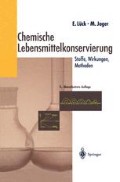Abstract
Troposphere is the lowest layer of the atmosphere where most weather phenomena occur. It extends about 16 km above the mean sea level (MSL) at the equator and 5 km over the poles. The irregularities in temperature, humidity and air density bend, diverse and scatter radio waves [1]. Some of the scattered energy may connect far away radio stations situated beyond line-of-sight (LOS), at the frequency range from VHF to microwave. Troposcatter communication makes use of these physical phenomena to provide beyond LOS links. It attracted a large amount of research and engineering effort from the 1950’s to 1970’s [2], and played an important role in military and civil communications before satellite communications won popularity.
Access this chapter
Tax calculation will be finalised at checkout
Purchases are for personal use only
Preview
Unable to display preview. Download preview PDF.
References
L. Boithias and J. Battesti, “Propagation due to tropospheric inhomogeneities”, IEE Proc., Part F, vol. 130, pp. 657–664, Dec. 1983.
F. A. Gunther/Tropospheric scatter communications, past, present and future”, IEEE Spectrum, pp. 79–100, Sept. 1966.
G. Roda, Troposcatter Radio Links. Artech House, 1988.
J. B. Scholz, T. C. Giles, and M. C. Gill, “A unique, robust low-rate (HF) radio modem”, in MILCOM’93, pp. 333–337, IEEE, Oct. 1993.
E. A. Laport, “Long-wire antennas”, in Antenna engineering handbook, Editor: H. Jasik, McGraw-Hill Book Company, New York, 1961.
F. Edbauer, “Performance of interleaved trellis-coded differential 8-PSK modulation over fading channels”, IEEE J. Select. Areas Commun., pp. 1340–1356, Dec. 1989.
Author information
Authors and Affiliations
Editor information
Editors and Affiliations
Rights and permissions
Copyright information
© 1997 Springer Science+Business Media New York
About this chapter
Cite this chapter
Zhang, W., Hackworth, J.A., Schoff, W.R. (1997). A Study of VHF Troposcatter Communication Channels in South Australia. In: Wysocki, T., Razavi, H., Honary, B. (eds) Digital Signal Processing for Communication Systems. The Springer International Series in Engineering and Computer Science, vol 403. Springer, Boston, MA. https://doi.org/10.1007/978-1-4615-6119-4_12
Download citation
DOI: https://doi.org/10.1007/978-1-4615-6119-4_12
Publisher Name: Springer, Boston, MA
Print ISBN: 978-1-4613-7804-4
Online ISBN: 978-1-4615-6119-4
eBook Packages: Springer Book Archive

